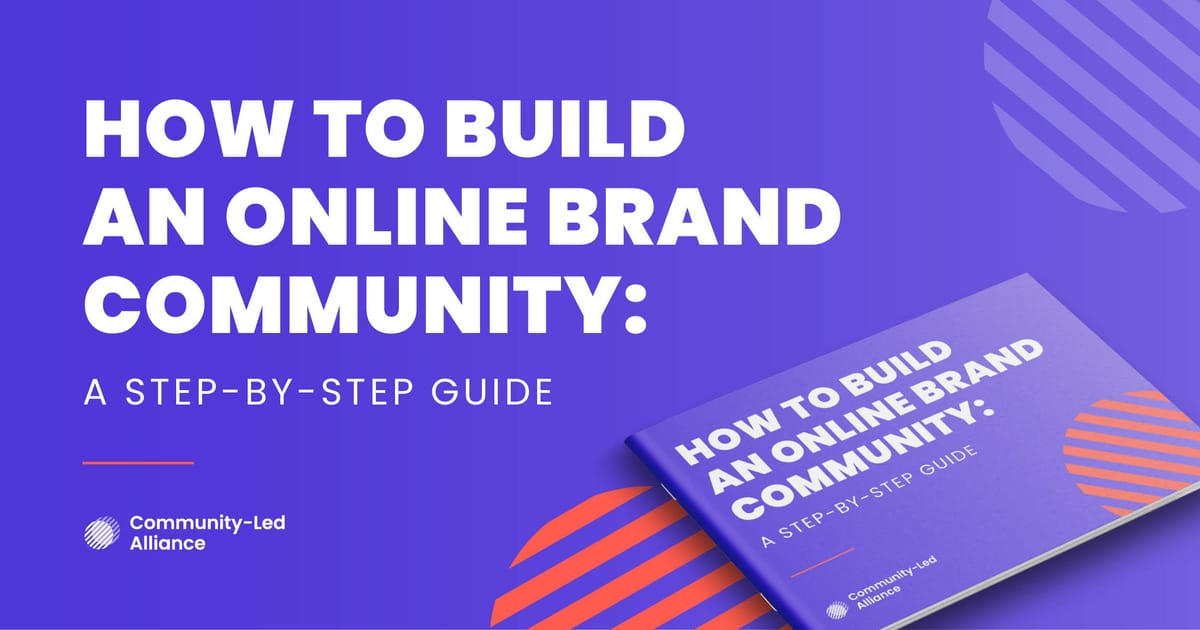Communities are vital hubs for connection, collaboration, and growth. Whether you're managing a forum, a social media group, or a brand community, keeping a close eye on what happens in your community is crucial.
Community monitoring means keeping an eye on all the activities, conversations, and interactions taking place. Being vigilant not only helps maintain a healthy and active community, but also drives increased engagement and growth.
Effective community monitoring allows you to stay informed about the ongoing discussions, identify and resolve conflicts, and understand the needs and preferences of your members. By tracking relevant metrics such as engagement rates, participation levels, and content performance, community managers can make data-driven decisions that enhance the overall member experience.
In this article, we will explore the key elements of community monitoring, including the important metrics to track, and the tools and techniques that can aid in effective monitoring.
Understanding community monitoring
Community monitoring is the process of observing and analyzing the activities and interactions within a community. It means keeping track of conversations, member interactions, content performance, and overall community health.
The goal of community monitoring is to ensure a vibrant, engaged, and growing community by identifying areas for improvement, resolving problems, and making informed decisions based on data.
A community manager plays a pivotal role in the monitoring process, responsible for:
- Keeping an eye on ongoing discussions, identifying key topics, and understanding member sentiment.
- Tracking engagement metrics, participation rates, and other relevant data to assess community health.
- Identifying and addressing conflicts or issues among members to maintain a positive environment.
- Actively participating in discussions, encouraging member contributions, and fostering a sense of community.
- Gathering feedback from members to understand their needs and preferences, and using this information to enhance the community experience.

By effectively monitoring a community, community managers can increase engagement by creating and promoting content that drives higher engagement. It also helps with member retention, as they can easily identify at-risk members and implement interventions to retain them.
This early identification can also help resolve conflicts or prevent them from escalating, which contributes to the overall harmony of the community.
Community based monitoring allows community managers to make informed decisions and identify growth opportunities, such as new member acquisition strategies and collaboration. By staying attuned to member needs and preferences, community managers can create a more personalized and satisfying community experience.
Key elements to monitor
Conversations and discussions
Monitoring conversations and discussions within your community is essential for understanding your members and creating an engaged atmosphere.
Tracking active and inactive discussions
Regularly review threads and posts to identify which discussions are active and engaging and which ones are dormant. Encourage participation in less active discussions by prompting members with questions or sharing relevant content.
Identifying trending topics and themes
Use monitoring tools to track which topics are gaining traction and popularity within the community. Analyze trending themes to understand what interests your members and create content or activities around these interests.
Monitoring the tone and sentiment of conversations
Pay attention to the tone of conversations to ensure they remain positive and constructive. Use sentiment analysis tools to gauge member sentiment and identify areas of concern or dissatisfaction.
User behavior and participation
Understanding how members behave and participate in the community can help tailor your strategies to foster engagement and growth.
Monitoring active and passive members
Identify and categorize members based on their activity levels, distinguishing between active contributors and passive observers. Develop strategies to encourage passive members to become more active, such as targeted outreach or engagement campaigns.
Understanding participation patterns and trends
Analyze participation data to identify patterns, such as peak activity times and popular types of content. Use this information to optimize your content posting schedule and plan community events.
Identifying key influencers and active participants
Identify key influencers and active participants within the community. Engage with these members to leverage their influence and encourage them to promote community activities.

Conflicts and disagreements
Conflicts are inevitable in any community, but how they are managed can significantly impact the community's health.
Recognizing early signs of conflicts
Stay vigilant for early signs of conflicts, such as heated discussions or negative comments and ddress issues promptly before they escalate into larger problems.
Strategies for conflict resolution
Develop and implement strategies for conflict resolution, including clear community guidelines and mediation processes. Train moderators and key members on conflict resolution techniques to ensure consistent and effective handling of disputes.
Turning conflicts into opportunities
View conflicts as opportunities to improve community dynamics and address underlying issues. Use feedback from conflicts to make necessary changes and enhance the overall community experience.
By focusing on these elements, community managers can ensure a well-monitored and thriving community. Monitoring conversations and discussions, understanding user behavior and participation, and effectively managing conflicts will lead to a more engaged community.

Tracking relevant metrics
Engagement metrics
Monitoring engagement metrics helps to understand how actively members are participating and interacting within the community.
Post frequency and quality
Track how often members post and the quality of their contributions. High-quality posts often lead to more meaningful interactions and sustained engagement.
Comment and reaction rates
Measure the number of comments and reactions (likes, shares, etc.) each post receives. These metrics indicate how interactive and engaging the content is for the community.
Member participation rates
Calculate the percentage of active members participating in discussions and activities. High participation rates reflect a vibrant and engaged community.
Growth Metrics
Growth metrics provide insights into the community's expansion and member retention.
New member acquisition
Track the number of new members joining the community over time. Analyzing acquisition trends can help identify effective growth strategies.
Retention rates
Measure how many members remain active in the community over a specific period. High retention rates indicate that members find value in the community and are likely to stay.
Churn rates and strategies to reduce them
Calculate the percentage of members who leave or become inactive. Implement strategies to reduce churn, such as re-engagement campaigns or personalized outreach to at-risk members.

Content performance metrics
Evaluating the performance of content helps you understand what resonates with members and drives engagement.
Popularity and reach
Analyze which content pieces are most popular and have the widest reach. Use this data to create similar content that appeals to the community.
Engagement rates for different types of content
Compare engagement rates across various content formats, such as posts, videos, and polls. Identify which formats drive the most interaction and tailor your content strategy accordingly.
Community events and initiatives
Assess the effectiveness of community events and initiatives by tracking participation and feedback. Determine which events are most successful and plan future activities based on these insights.
Tracking these relevant metrics provides a comprehensive view of your community's health and growth. By regularly monitoring engagement, growth, and content performance metrics, community managers can make data-driven decisions to foster a more engaged and thriving community.
Tools and techniques for effective community monitoring
Analytical Tools
Analytics tools are essential for getting an overview of your community’s overall performance. They can track a range of metrics from engagement to user behavior, data which can then be used by community managers to implement improvements to their community.
Community monitoring tools:
Google Analytics
GA provides detailed insights into website traffic, user behavior, and engagement metrics. It’s useful for tracking how users interact with your community site or forum.
Hootsuite
Hootsuite is a comprehensive social media management tool that allows you to monitor conversations, schedule posts, and analyze engagement across multiple social media platforms. It’s ideal for communities with a significant presence on social media.
Sprout Social
Sprout Social offers social media monitoring, engagement, and analytics features. It helps identify trends, track performance, and manage community interactions.

Features to look for in monitoring tools:
- Real-time analytics: Immediate insights into community activities and engagement.
- Sentiment analysis: Ability to gauge the tone and sentiment of conversations.
- Comprehensive dashboards: Visual representation of key metrics and trends.
- Integration capabilities: Compatibility with other tools and platforms used by your community.
- Customizable alerts: Notifications for specific activities or metrics.
To get the most out of these types of tools, set up tracking for key engagement and growth metrics relevant to your community. Regularly review your dashboards and reports to stay updated on community performance.
Use sentiment analysis to identify potential issues and areas for improvement, using customized alerts to notify you of significant changes or trends in real-time. Leverage integration features to combine data from multiple sources for a holistic view across the entire community.
Manual monitoring techniques
Sometimes tools aren’t enough, and community managers need to get directly involved. This can be done with regular check-ins and by participating in discussions. Active participation allows community managers to stay connected with members and helps them monitor ongoing conversations so they can identify any issues early.
Use platform-specific notification settings to stay informed about new posts, comments, or mentions. You can set alerts for specific keywords or phrases that may indicate potential issues or trending topics.
Conduct regular surveys and polls to gather feedback from members, then use this collected data to understand member preferences, identify areas for improvement, and make informed decisions.
Automated monitoring solutions
While manually engaging with the community is effective, automatic monitoring can also be invaluable.
It’s efficient, as automated tools can monitor multiple channels and metrics simultaneously, saving time and effort. They can also provide consistent tracking and reporting, reducing the risk of human error. Finally, they’re scalable, capable to handle large volumes of data, making it easier to manage growing communities.
Examples of automated monitoring systems:
- Brandwatch: A social listening tool that tracks conversations and trends across social media and online platforms.
- BuzzSumo: Monitors content performance and identifies trending topics and influencers.
- AgoraPulse: Provides automated social media monitoring and reporting, helping manage community interactions efficiently.
While automation can handle routine monitoring tasks, it's essential to maintain a personal touch. Regularly engage with community members personally to build relationships and trust and use automated insights to inform your interactions and address specific issues or opportunities.
By leveraging a combination of analytical tools, manual techniques, and automated solutions, community managers can effectively monitor their communities. This combined approach ensures that you stay informed about community dynamics, enabling you to foster a more engaged and thriving community.

Strategies to enhance engagement and growth
Fostering engagement
Create and promote engaging content
Produce a variety of content formats such as articles, videos, infographics, and podcasts to cater to different preferences. Focus on topics that are relevant and valuable to your community members, identified through monitoring and feedback. Also, create content that encourages interaction, such as Q&A sessions, polls, and quizzes.
Encourage member participation and feedback
Ask open-ended questions to spark discussions and encourage members to share their thoughts. Acknowledge active participants with shout-outs, badges, or other rewards to motivate engagement, and rovide multiple avenues for members to give feedback, such as surveys, polls, and suggestion boxes.
Organize events, challenges, and contests
Host events like webinars, live streams, and virtual meetups to bring members together and foster a sense of community. Launch challenges that encourage members to showcase their skills or creativity, with prizes for the best entries. Organize contests that are fun and engaging, encouraging members to participate and interact with each other.
Growing the community
Outreach and marketing strategies
Run marketing campaigns targeting potential members who share similar interests and values with your community. Publish content that highlights the benefits of joining your community and showcases member success stories, and optimize your community's online presence through search engine optimization and search engine marketing to attract new members.
Collaborations and partnerships
Partner with influencers who align with your community’s values and have a strong following in your niche. Collaborate with other communities or organizations to cross-promote each other's content and events. Invite experts and thought leaders to contribute content or participate in events, providing value to your members.
Leveraging social media and other platforms
Maintain an active presence on relevant social media platforms to reach a wider audience. Utilize platforms like Discord, Slack, or Facebook Groups to create dedicated spaces for your community. Encourage members to share community content on their personal networks to attract new members.
Feedback and adaptation
Regularly seek and implement member feedback
Establish regular feedback loops through surveys, polls, and direct interactions to gather member input. Show members that their feedback is valued by implementing their suggestions and making visible improvements. Communicate openly about the changes made based on member feedback and the reasons behind them.

Adapt strategies based on monitoring insights
Use insights from community-led monitoring to refine your engagement and growth strategies. Be prepared to pivot your strategies based on changing member needs and community dynamics. Stay informed about industry trends and best practices to keep your community management approach up-to-date.
Continuous improvement and innovation
Regularly test new ideas and initiatives to keep the community experience fresh and engaging. Involve members in the innovation process by soliciting their ideas and feedback on new initiatives. Periodically review the performance of your engagement and growth strategies to identify areas for improvement.
With these strategies, community managers can enhance member engagement and drive community growth.
Fostering engagement through interactive content and events, growing the community through targeted outreach and partnerships, and continuously adapting based on feedback and insights will lead to a vibrant and thriving community.
Final thoughts
Monitoring your community is a crucial part of effective community management. It provides valuable insights into member behavior, engagement patterns, and content performance.
It allows community managers to make informed decisions that enhance both engagement and growth.
By keeping a close eye on the dynamics within your community, you can identify growth opportunities, address issues promptly, and foster a positive community environment.
Download our guide to building an online brand community, which features advice from community professionals, checklists, definitions, and templates, and is the key to the very first step of your community-led growth approach.





